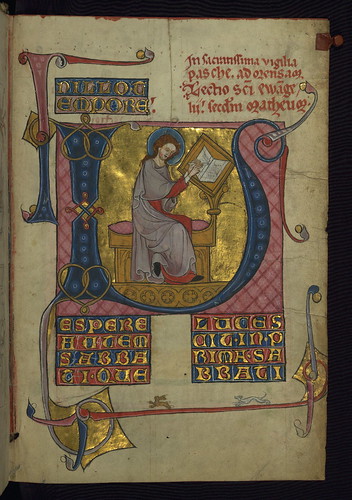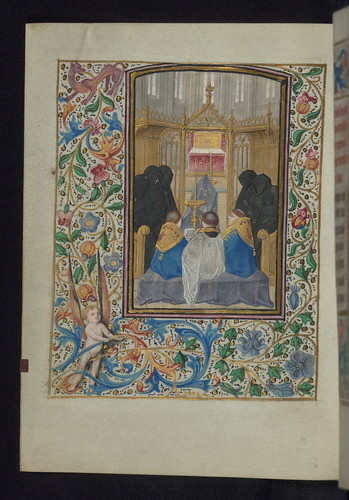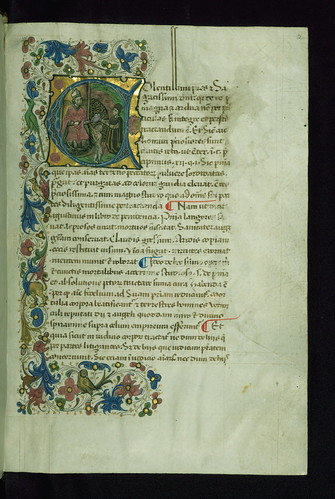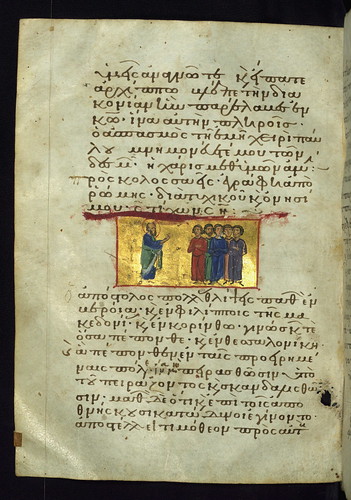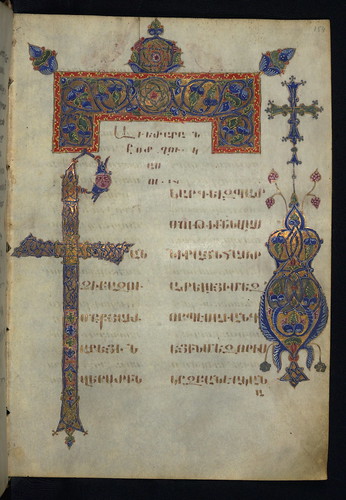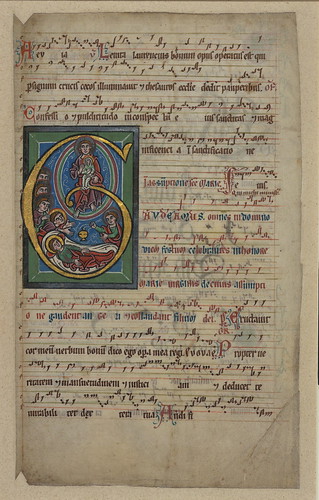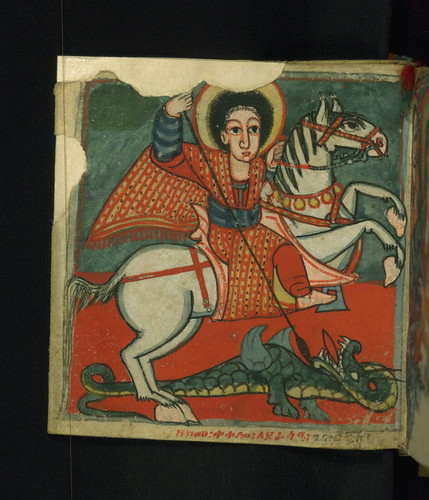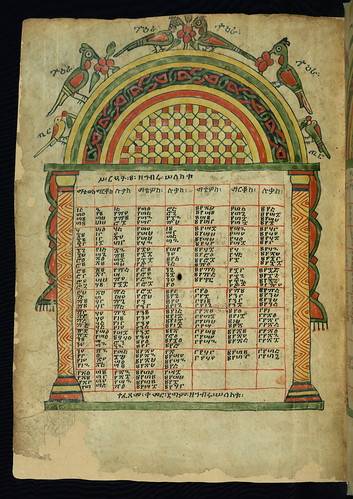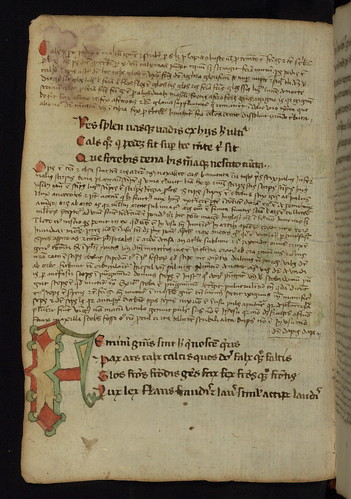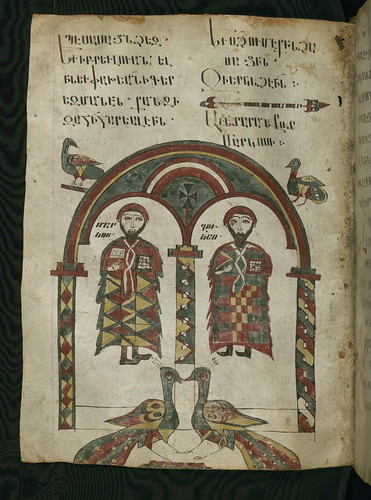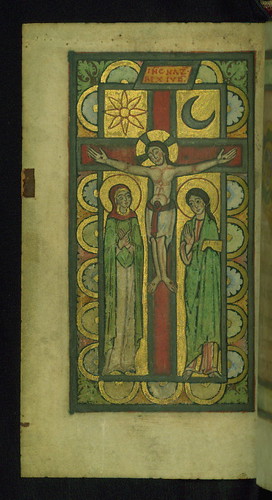
Helmarshausen Psalter, Christ on the Cross, with Mary and St. John, Walters Manuscript W.10, fol. 41v, originally uploaded by Walters Art Museum Illuminated Manuscripts.
This small volume of psalms was created for the private use of a noble lady, probably a relative of Duke Henry the Lion (1129-1195). It was made at Helmarshausen, the same monastery that produced the sumptuous Gospels of Henry the Lion, which sold at auction in 1983 for nearly 12 million dollars, making it the most expensive art object sold to that point. This psalter is much smaller and less elaborate than the Gospels, with only three miniatures, but the quality is very high. The identity of the manuscript’s owner, the lady pictured on fol. 6v, has been the subject of much debate. Scholars have conjectured that she is Gertrud, Henry’s daughter, Clementia, his first wife, or Matilda, his second wife. Because the portrait bears no inscription, and because the facing page, which may have shown the lady’s patron saint, is missing, the question must remain open.
